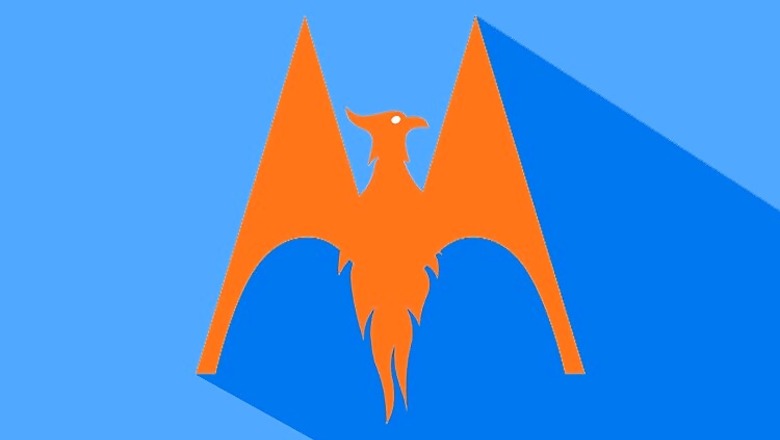
views
Motorola may have been the pioneer of mobile phones and followed it with a long list of great handsets over the years, but even that couldn’t help the company from going on a downward spiral around half-a-decade ago.
It was around 5 years ago, when Motorola, which once introduced to the world the now ubiquitous mobile phone, reported that its mobile division (Motorola Mobility) was incurring heavy losses and separated it from the rest of the company. And eventually sold it to Google. While Google was assumed to bring good fortune to Motorola Mobility, it, surprisingly, couldn’t do much to reshape the company’s reputation and brand, and further sold it to Lenovo. Meanwhile, Motorola had started to trim down its operations, which included quitting markets with a loyal customer base such as India and across Asia Pacific.
So much had happened with Motorola Mobility in the following three years since its split from Motorola Solutions in 2011 that recovery looked uncertain. And in the meantime, the mobile phone industry had taken a 360-degree turn with Samsung moving up the charts and local manufacturers becoming more active and the once powerful Nokia and BlackBerry falling to difficult days.
But one fine day in the late 2013, Motorola teased India, hinting its comeback to the country. And finally in a couple of month’s time (February 5, 2014 to be precise), Motorola was back to India with an all-new smartphone - the Moto G. While Motorola had made a comeback to the Indian smartphone market, it wasn’t surely going to be a cakewalk for the company who had remained dormant for years and had earned not-so-good reputation in the past few years. It didn’t only have to create a space for itself in the already crowded market, but also had to undergo an image makeover and gain the trust of customers back.
Many presumed, that in such a situation, the company would go out with all guns blazing. But it did exactly the opposite. The company kept a not-so-high profile and let its actions speak for themselves. It used the whole year to understand the market that it had lost touch with, while periodically pushing its new value for money devices. In all, the company introduced around 3-4 phones (and a smartwatch), and they were all well-received by both consumers and critics.
By the time the year 2014 ended, the company seemed to have understood the market quite well, as it clearly reflected in its moves in the following year - 2015.
First, it had got the formula for the Indian market, which perhaps others couldn’t as rightly as Motorola did. While the competition this year tried to take the first mover advantage by offering people the first-of-its-kind and/or extraordinary features in phones, Motorola continued with its basic approach of giving users a right mix of price, features, hardware and software. And this simple approach kept it thriving throughout the year. The Moto phones not only fared well, but also offered an experience close to native Android. While the company loads Moto phones with its own set of apps, but that’s different from the usual bloatware (maybe, with the exception of the pre-installed Flipkart app) that many other companies ship their phones with.
Second, while the company, quite like last year, stuck to a handful of handsets in 2015. It still managed to compete in almost all price bands. Unlike other major companies that attempted to launch a phone for every Rs 2000 or Rs 5000 price break, Motorola didn’t bother to pay heed to these narrow price points. It instead targeted a broader price segment. In the sub Rs-7K and sub-Rs15K segments, the company placed the successors (with improved specs and incremental hardware upgrade) to its popular Moto E and Moto G phones, respectively. Whereas, to compete with rivals’ mid-range and top-of-the-line offerings, it introduced two fresh smartphones - the Moto X Play and the Moto X Style. All the four phones garnered rave reviews and got along with users pretty well. In a nutshell, it took Motorola only four warriors to fight against the large armies of other players.
Amidst its attempts to match up to rivals, Motorola didn’t forget that innovation would what give it an edge over its rivals. And in the last quarter of the year 2015, the company unveiled a new technology that could seal one of the biggest chinks in the smartphone armour. The company unveiled the world’s first shatterproof phone based on its Moto ShatterShield, which is an integrated system consisting of five layers designed from materials that absorb shock from an impact.

The Moto phone with a shatterproof display is being sold in the US by the name of the Droid Turbo 2, but it will be launched as Moto X Force in India and other international markets. Motorola India head Amit Boni, in an exclusive interview with IBNLive, said that the Moto X Force would come to India in January 2016.
While other key smartphone manufacturers like Samsung and Apple also showed off unprecedented technological breakthroughs, they really couldn’t come to much practical use in the real world. For instance, the dual-curved display (that spills to the left and the right) on Samsung’s Edge phones and Apple’s 3D Touch in iPhone 6s. Other companies including LG, HTC, and OnePlus just appeared to be developing phones with features borrowed from each other.
The well thought out strategies, great products, competitively pricing, and the path breaking innovations not only helped Motorola in re-creating a decent space for itself in the smartphone market, but it also helped the company in resurrecting its brand that had not very long ago hit rock bottom. While the hard sales figures for the year are yet to come by, but to see a large number of people around - in trains, flights, markets or streets - using Moto phones definitely strengthens the claim. I remember that spotting people with Moto phones wasn’t a usual thing till about a year ago.
The company may not have invested as aggressively as LG, Samsung or Apple in branding, but the word-of-mouth publicity indeed helped the brand grew stronger. It isn’t sure if Motorola has managed to gain back its old loyal customers, but it definitely has created many new loyal customers - all that in a matter of just two years.
(Phoenix image via Shutterstock)


















Comments
0 comment